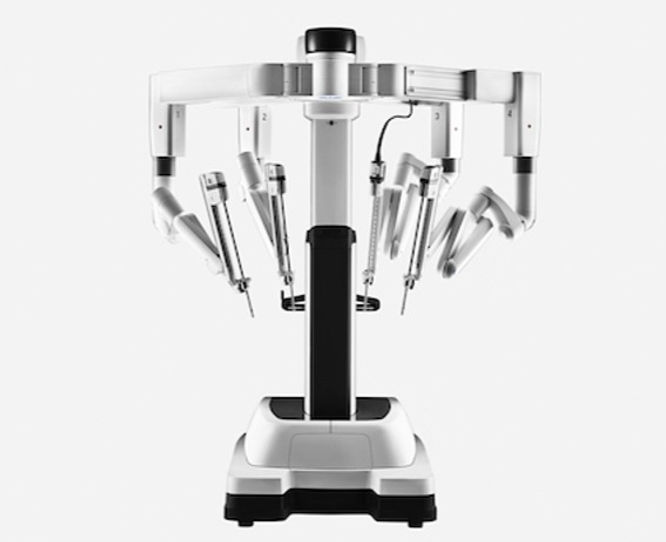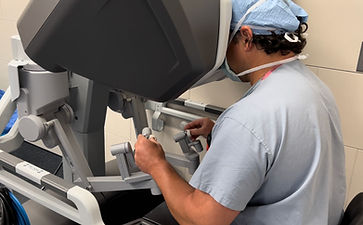The future has arrived: Robotic surgeries increase, giving patients minimally-invasive options

An image of the da Vinci X surgical system. Photo courtesy of Beaumont Health
Beaumont Health’s dramatic increase in robots good news for patients
A new fleet of robots is in place at Beaumont Health, expanding the robotic surgery program by nearly 50% to dramatically increase the ability of doctors to provide an advanced, minimally invasive option for more patients.
Beaumont now has 24 da Vinci robotic surgical systems spread throughout the division, with the recent installation of seven additional robots. The expansion means experienced Beaumont robotic surgeons and their teams will have the capacity to treat an additional 2,200 patients with minimally invasive robotic surgery at Beaumont Health.
“We expanded the robotic surgery program to meet demand,” Dr. Benjamin Schwartz, president of Beaumont Health, said. “Our patients – and their physicians – deserve access to the latest technology available. The robotic surgery teams at all eight Beaumont Health hospitals are recognized as the best of the best. More robots mean more patients will have access to these experts and advanced capabilities when they need it most.”
The main benefits of robotic surgery include smaller incisions with less scaring, less pain and trauma for the patient, a shorter recovery time and, if the surgery isn’t outpatient, shorter hospital stays. A study published in December 2021 in “Hernia, The World Journal of Hernia and Abdominal Wall Surgery” by Beaumont Health showed patients undergoing robotic hernia surgery experienced on average a 3-day hospital stay versus a 5-day stay for traditional surgery.

And only 5% of robotic surgery patients experienced complications at the surgical site versus 15% of those who had traditional surgery.
“When robotic surgery is appropriate for the patient and the situation, we generally see great outcomes,” said Dr. Anthony Iacco, Medical Director of Robotics at Beaumont Hospital, Royal Oak, and lead investigator for the study. “This is a win-win both for the patient’s experience and for reducing time spent in the hospital.”
Many robotic surgeries can be done on an outpatient basis due to the minimally invasive nature of the procedures. Beaumont Children’s is also among a handful of children’s hospitals to provide robotic-assisted laparoscopic surgery for young patients.
Beaumont Health physicians most often use the robots for removal of all or part of a prostate, gallbladder or kidney; gynecologic surgery, like hysterectomy; intestinal hernias; bariatric surgery; orthopedic surgery, and surgery of the colon or rectum.
“Our highly skilled surgeons offer this option to patients if robotic surgery is appropriate for their case,” said Dr. Krikor Arman, Robotic Program Medical Director for Beaumont Hospital, Grosse Pointe. “Nothing can replace the expertise of a surgeon – or their ability to know what’s best for their patient. Plenty of surgeries will continue to be conducted using traditional methods, if the surgical team determines that’s what is best for the patient. But it is great to have more options with robotic technology.”

For robotic surgery, the surgeon sits at a console near the patient and looks at a screen. The surgeon sees what a small camera at the end of the robotic arm is capturing inside the patient, offering a magnified, three-dimensional view that improves the surgeon’s vision and ability to manipulate vital structures. The surgeon then uses remote hand controls to move and guide the robotic arms and conduct the surgery through either one or a couple of small incisions.
The process allows surgeons to have a better, up-close view inside the patient, and more precise movements of the tools being used to perform the surgery. In robotic surgery for children, the camera is especially beneficial because it allows a better, enlarged view of very small surgical areas.
If you have a story idea for SocialHouseNews.com, please contact Ed Wright at 734-664-4657 or edwright@socialhousenews.com.




